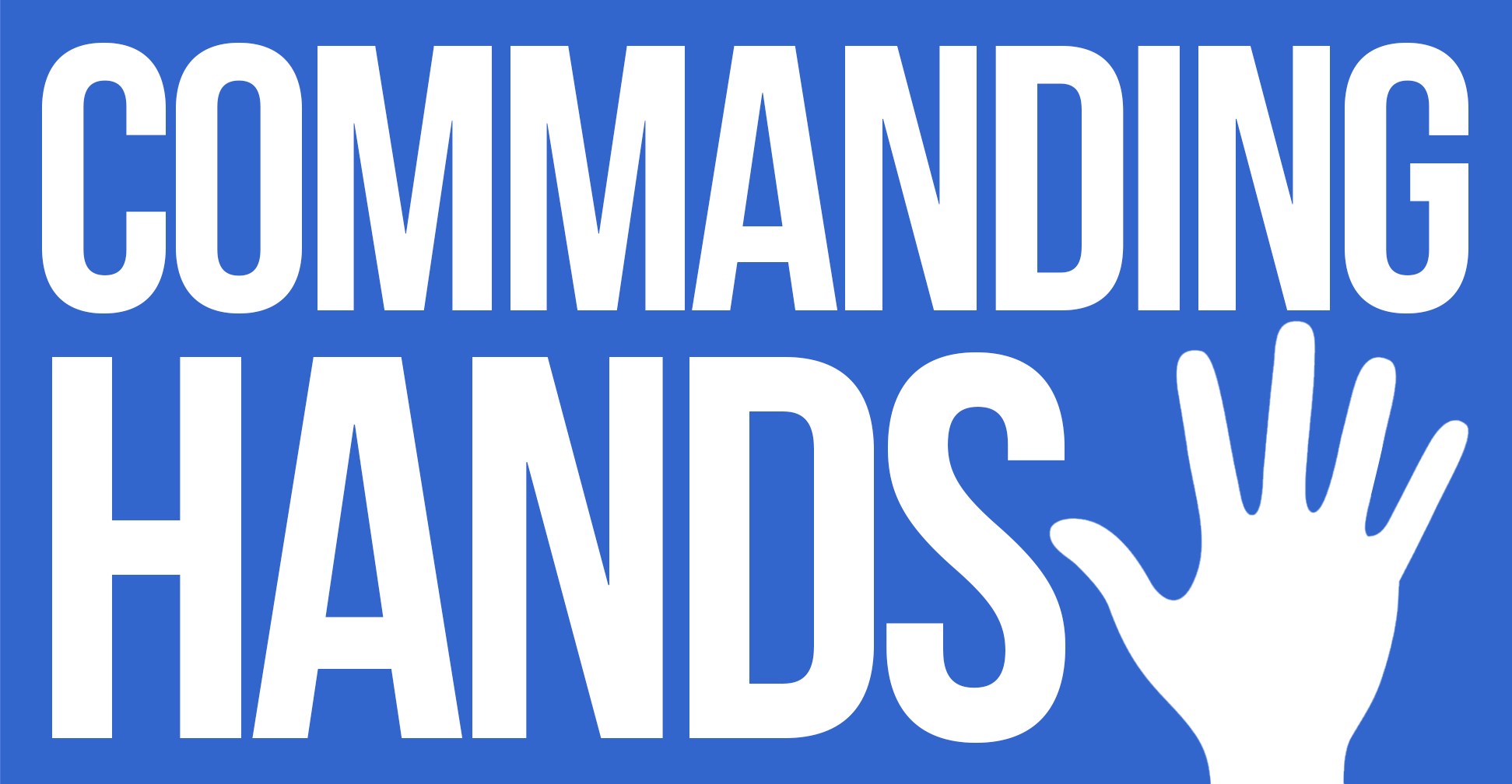Now you’ve learned how to fingerspell the alphabet in BSL, let’s move on to introducing yourself.
How to introduce yourself in BSL
The sign for HELLO, as you might expect, is a simple wave. More greeting signs are covered in 2.2 Greetings & Manners.
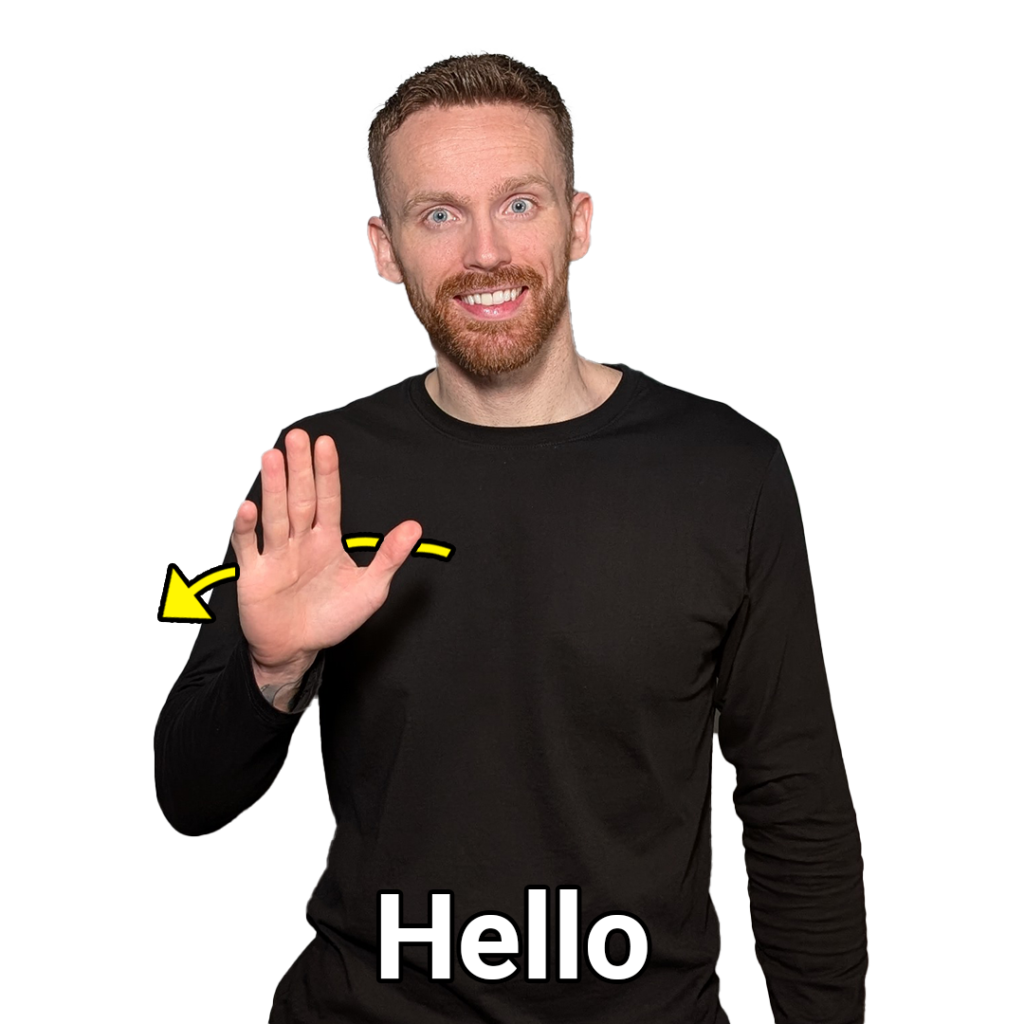
My name is… is signed NAME ME followed by fingerspelling your name. As you fingerspell your name, remember your lip pattern should be that of your name, not each individual letter.
Remember, BSL is a language in it’s own right and English connecting words such as “is” are not always required. BSL’s grammar is different and sentences are not word-for-sign translations of English.
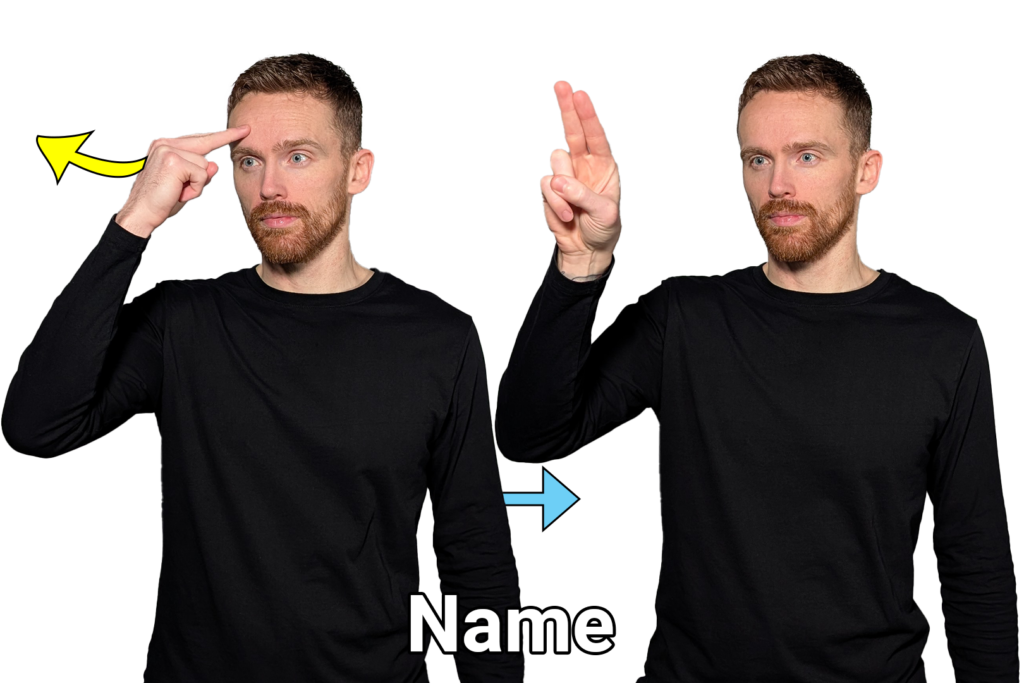
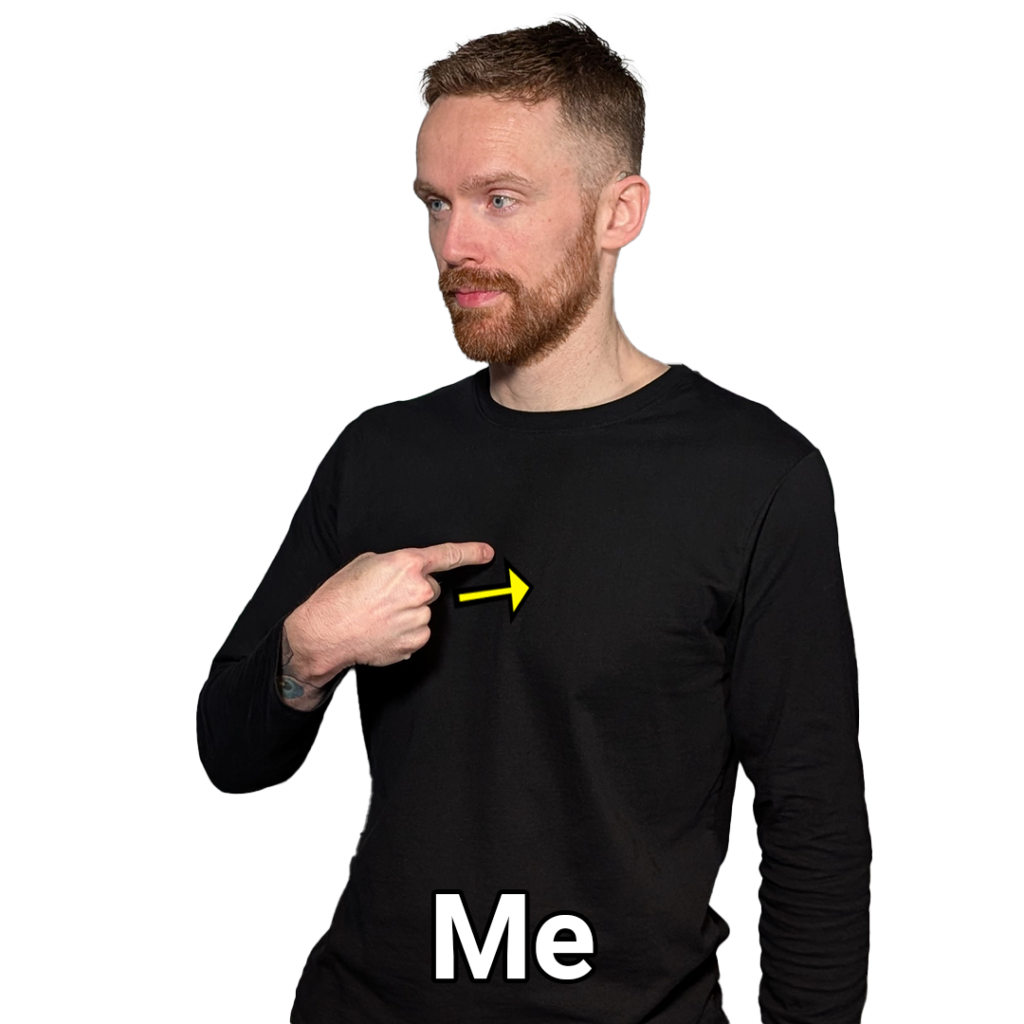
Exercise: Sign NAME ME and then fingerspell your name.
BSL is a fully fledged language and as you might expect, there is more than one grammatically acceptable way to sign your name. For example, you could also sign MY NAME and then fingerspell your name. The sign for MY is below.
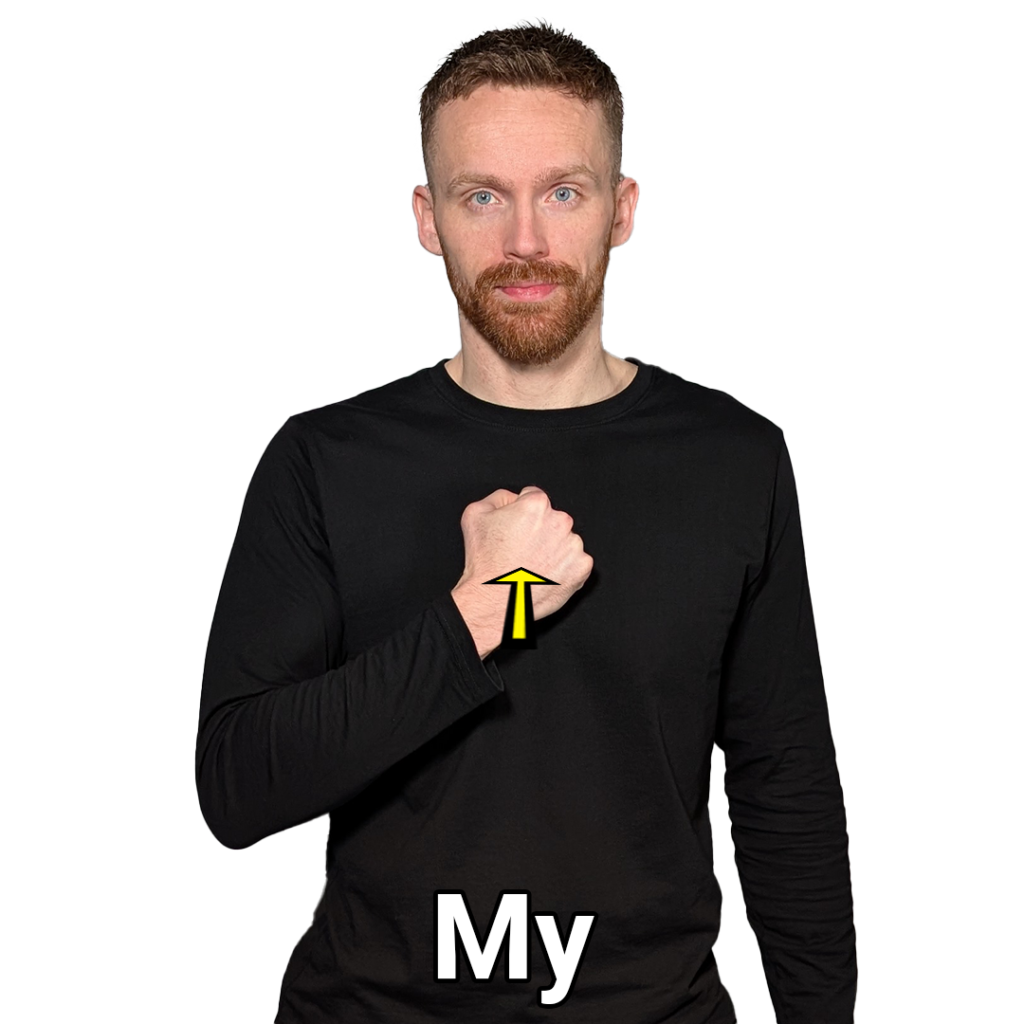
Subject and object pronouns such as ME, YOU, HE/HIM, SHE/HER and THEM are signed by directly pointing at the person you’re referring to. In the hearing world, pointing may be considered rude but in BSL, pointing is not rude at all. In fact, it is an essential part of the language.
Possessive pronouns such as MY/MINE, YOUR/S, HIS, HERS and THEIRS are signed with a closed fist in the direction of the person.
When asking questions in BSL, it’s important that your facial expression is inquisitive so it’s clear you are asking a question and expecting a response. Raise or lower your eyebrows, purse your lips and tilt your head slightly when signing WHAT (or any question sign). Question signs are typically signed at the end of BSL sentences, which helps with turn-taking in conversations as there is a clear visual clue that you are expecting an answer.
To ask what is your name? you could sign either NAME YOU WHAT? or YOUR NAME WHAT?
NAME YOU WHAT? is demonstrated below.


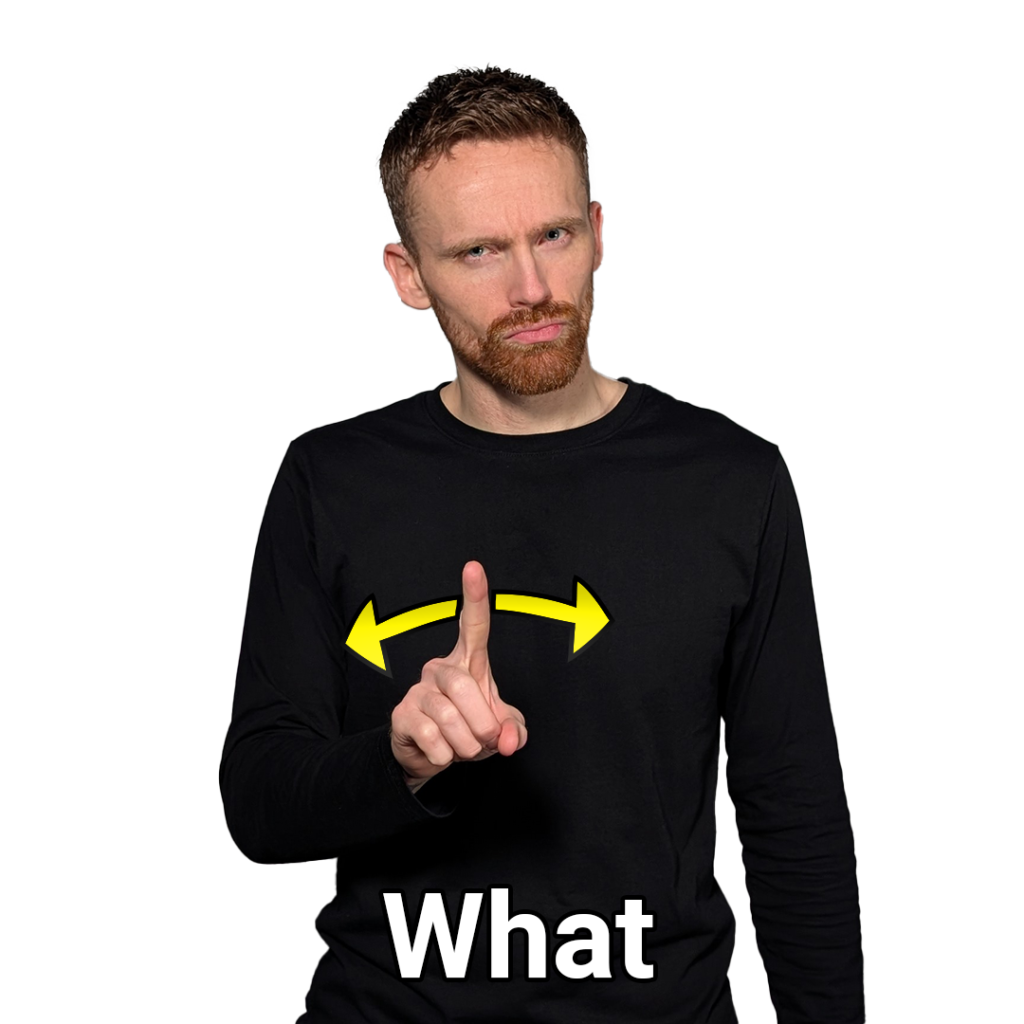
YOUR NAME WHAT? is demonstrated below.
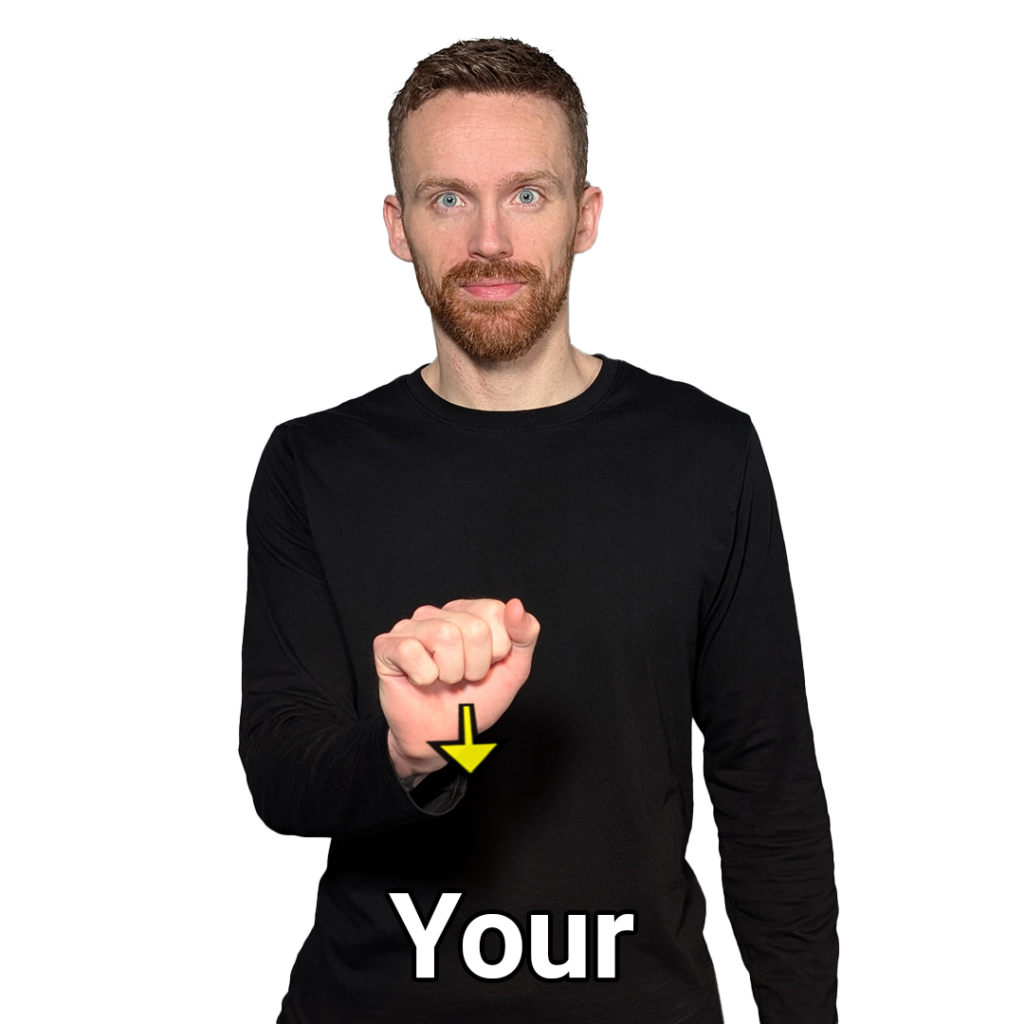


Exercise: If you have a partner, take turns introducing yourself to each other and asking what their name is. If you are in a group, you can swap pairs.
If you already know their name, make it more fun and give yourself a new name for this activity to really test out your partner’s receptive skills!
Good to know: sign names
Most members of the Deaf community have a sign name. This provides a quick and personal way to refer to someone without the need for fingerspelling. Sign names are specifically linked to that person, some examples include:
- A physical trait linked with the person e.g. curly hair for someone who has curly hair.
- A place name if the person has moved away from their home country or town e.g. Wales for someone from Wales.
- A hobby the person enjoys such as cycling.
- Where a person’s surname has an obvious sign, their first name may be initialised followed by the sign e.g. Andy Brown’s sign name could be the letter A followed by brown.
Try to think of a potential sign name for yourself. At this stage, it isn’t essential for you to have a sign name but it can be a fun activity to think of potential ideas. Sign names are sometimes given by members of the Deaf community. Unlike nicknames, sign names are a unique aspect of Deaf culture, symbolising acceptance by the community.
SIGN NAME is demonstrated below.
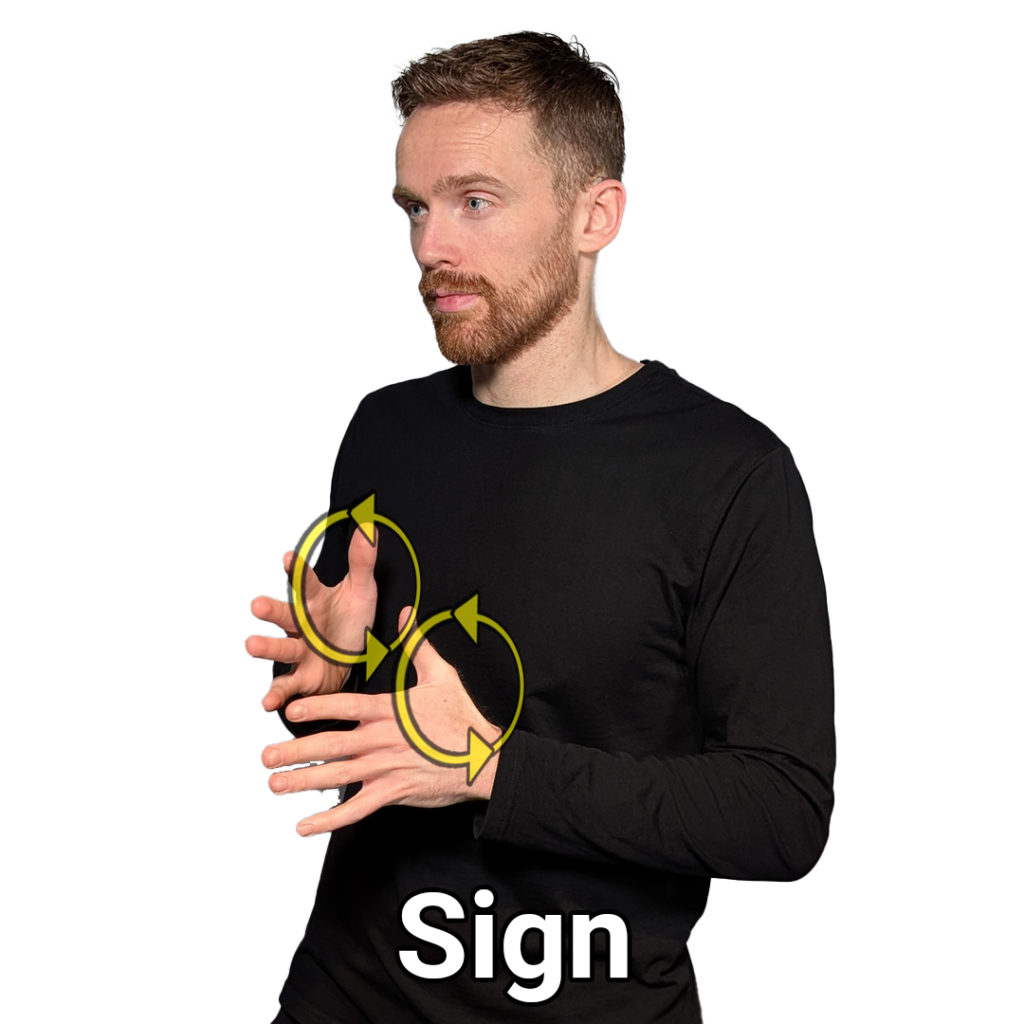

Video demonstration
Key points to remember
1. When fingerspelling your name, mouth your name in full rather than each individual letter.
2. Have an inquisitive expression when asking questions like what is your name?
3. Members of the Deaf community will often have a sign name.
Useful downloads and links
